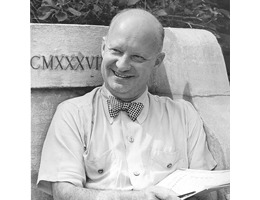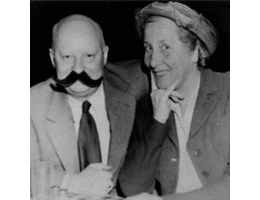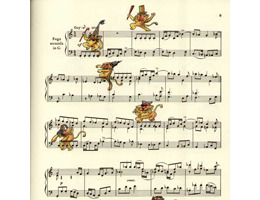Sonata for Althorn and Piano: I. Ruhig bewegt From Paul Hindemith – Sonatas for piano and… (2015) Released by Harmonia Mundi Hindemith: Sonata for Althorn and Piano: I. Ruhig bewegtHindemith composed more than 30 sonatas for the most diverse instruments
Hindemith
Symphonic Metamorphosis of Themes by C.M.von Weber (1943) III Andantino From Hindemith: Violine Konzert / Symphonic Metamorphosis / Konzertmusik Op. 50 (2013) Released by Ondine Hindemith: Symphonic Metamorphosis of Themes by C.M.von Weber (1943) – III AndantinoOndine presents a release
During a 1928 lecture for choral conductors in Berlin, Paul Hindemith addressed the widening gap between contemporary composers — and here he particularly emphasized Arnold Schoenberg — and the general musical public. “The tenuous connection in music today between producers
Paul Hindemith: Die Serenaden, Op. 35 “Duett for Viola and Violoncello” At the beginning of 1940, Gertrude was still stuck in Switzerland and desperately looking for a way to join her husband, who had secured lectureships at the University of
In his Suite 1922, Paul Hindemith had not only referenced in popular music genres; he also paid homage to the gestures and aesthetic of the high Baroque. Like many composers of the time, Hindemith was looking for greater objectivity and
Paul Hindemith: Der Schwanendreher (Viola Concerto), II If you have ever taken wedding vows, you might still remember uttering the words “for better or for worse.” For Gertrud and Paul Hindemith, the “worse” was slightly more threatening than merely worrying
In most cases, prenuptial agreements or matrimonial regimes include provisions for division of property and spousal support in the event of divorce or breakup of marriage. However, these contracts rarely regulate issues relating to the children of a marriage, particularly,
Wilhelm Furtwängler had asked Paul Hindemith to write an orchestral work for the Berlin Philharmonic’s 1933/34 season – just at the moment when Hindemith had decided to write an opera based on the famous Isenheimer Altar (now in the Unterlinden








